Basic Structure
The sequence of assembly of the basic structure of the airplane (fuselage, wings and tail) will depend on the instructions included in the kit. Follow them closely. Here are some general tips that apply to all such assemblies:
1) Dry fit the parts before gluing. This refers to taping everything together to make sure that (a) you understood the instructions and (b) the parts fit correctly and don't require major surgery (it happens). This will generally mean placing the assembled and painted cockpit between the fuse halves, and taping them together. Then tape the wings to the fuse. Then test fit the tail pieces. Discovering problems now will be a lot less frustrating than after you apply glue to the surfaces.
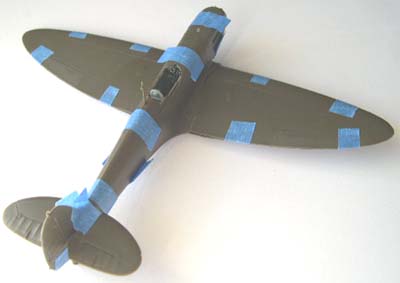
Above: Airplane assemblies taped together to check for fit.
2) Speaking of glue, use as little glue as possible. Don't squirt directly from the tube onto the airplane. Squeeze a little onto a piece of scrap paper, then use the tip of a pin to apply the glue in a thin bead. Try to keep the glue near the inside of the edge. The excess glue will get squeezed out onto the surface of the airplane and will harden. This (1) creates extra work with sandpaper or files to make the surface smooth again (2) can cause surface detail to be removed during the smoothing process. When it comes to glue, "less is more".
3) Make sure that the alignment is good. The line joining the wingtips should be perpendicular to the vertical fin. The horizontal fin should also be perpendicular to the vertical fin. View the airplane from front and back during the dry-fitting, then periodically as the glue is drying, to double-check the alignment. One way to get near-perfect alignment is to tape everything together first, then run liquid glue (such as Tenax) into the joints using an old, fine paintbrush.
4) You will sometimes get gaps between the glued parts. These are obvious if they occur where the fuselage halves join, or where the wing meets the fuselage. You can remove these by applying filler material to the gap. Testors and other manufacturers have filling putties made for this purpose:
- Apply some masking tape on either side of the gap. Get as close as possible (less than a millimeter).
- Squeeze some of the putty on a scrap piece of paper or plastic.
- Use a modified toothpick or other hardwood stick as a putty knife: cut to a sharp chisel-like edge.
- Apply the putty with the modified toothpick, pressing down gently into the gap.
- Wipe along the joint to remove the excess.
- Remove the tape, then let the putty dry as recommended.
- Use sandpaper to smooth the joint.
- Repeat if necessary.
Some people prefer to use medium thickness CA glue for filler, because it dries almost instantly into a surface hard enough for sanding. Just carefully wick into the gap and let dry. With CA, don't use tape, it may just stick to the model.
Below: Materials for gap filling. Use contour putty or CA glue.
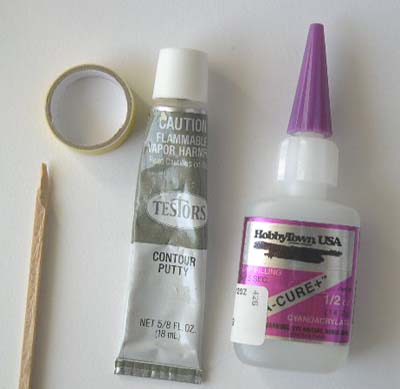
Below: Gap to be filled.
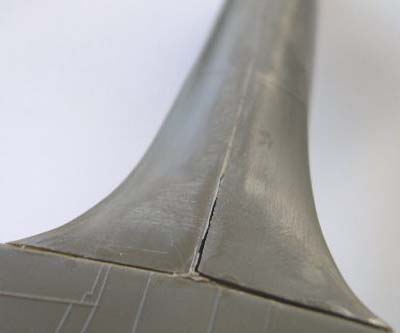
Below: Tape in place on either side of gap.
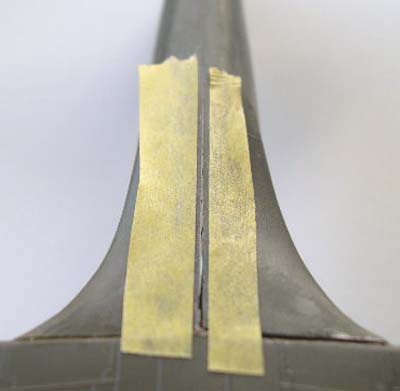
Below: Gap filled with Testors brand putty.
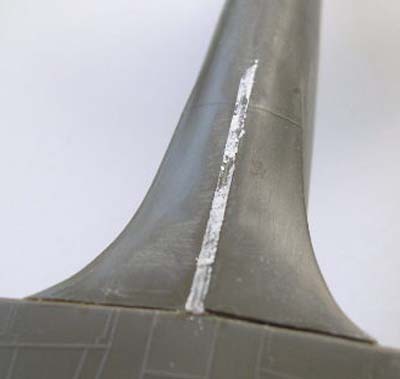
Below: After 1hr drying time, putty sanded smooth.
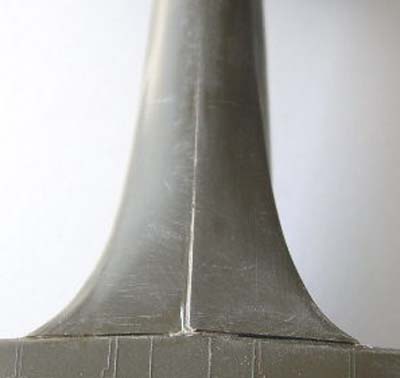
Send us your comments below! Login with your Facebook, Twitter, Google or Yahoo account.
